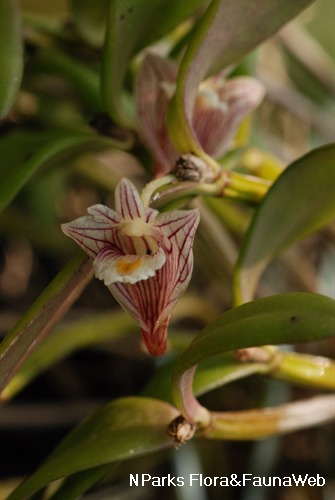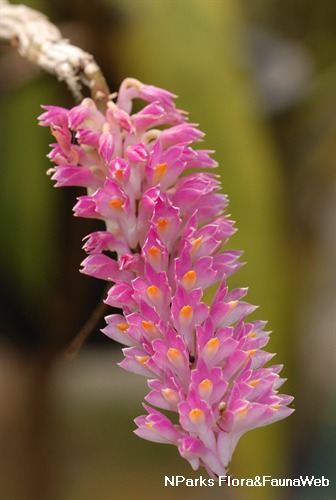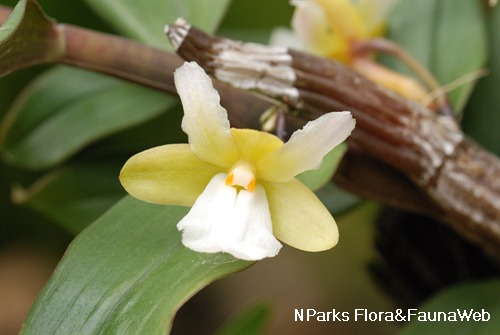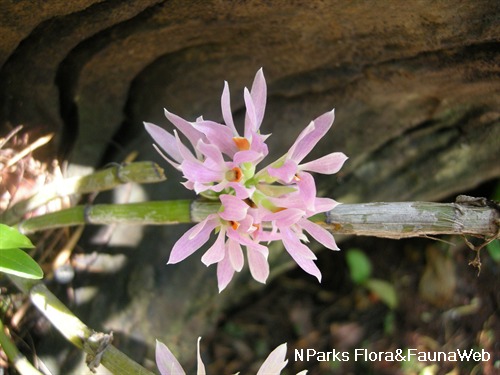
Name
Classifications and Characteristics
| Plant Division | Angiosperms (Flowering Seed Plants) (Monocotyledon) |
|---|---|
| Plant Growth Form | Epiphyte |
| Lifespan (in Singapore) | Perennial |
| Mode of Nutrition | Autotrophic |
Biogeography
| Native Distribution | Myanmar, Thailand, Vietnam, Cambodia, Malaysia, Sumatra, Java and Borneo. |
|---|---|
| Native Habitat | Terrestrial |
| Local Conservation Status | Native to Singapore (Presumed Nationally Extinct (NEx)) |
Description and Ethnobotany
| Growth Form | An epiphytic, sympodial orchid. |
|---|---|
| Foliage | The leaves are thick and leathery and come in 1 to 2 leaves per stem. |
| Stems | It has close-set, pendulous stems that form a dense mat. The stems are club-shaped and are usually 2 to 4cm long. |
| Flowers | The inflorescences are borne at the tip of the stem and are single-flowered. The flowers are about 15mm long and last 1 to 2 days. The petals and sepals are white with dark pink veins while the flower lip is white with a yellow spot and dark pink streaks originating from the base of the lip. Flowering seems to be triggered by sudden rainstorms. |
| Habitat | It can be found growing on trees in well-lit positions such as roadsides from sea-level to an altitude of 1500m. |
| Cultivation | It is ideally grown under light shade and can be grown in a well drained and aerated growing media or mounted on tree fern under high humidity. |
Landscaping Features
| Desirable Plant Features | Ornamental Flowers |
|---|---|
| Landscape Uses | Small Gardens |
Plant Care and Propagation
| Light Preference | Semi-Shade, [Remarks] (It is ideally grown under light shade. ) |
|---|---|
| Water Preference | Moderate Water, Occasional Misting |
| Propagation Method | Seed, Division, Tissue Culture |
Floral (Angiosperm)
| Flower & Plant Sexuality | Bisexual Flowers |
| Flower Colour(s) | Pink, White, Yellow / Golden |
|---|---|
| Flower Grouping | Solitary |
| Flower Location | Terminal |
| Flower Symmetry | Bilateral |
Image Repository
Others
| Master ID | 31472 |
|---|---|
| Species ID | 5869 |
| Flora Disclaimer | The information in this website has been compiled from reliable sources, such as reference works on medicinal plants. It is not a substitute for medical advice or treatment and NParks does not purport to provide any medical advice. Readers should always consult his/her physician before using or consuming a plant for medicinal purposes. |





